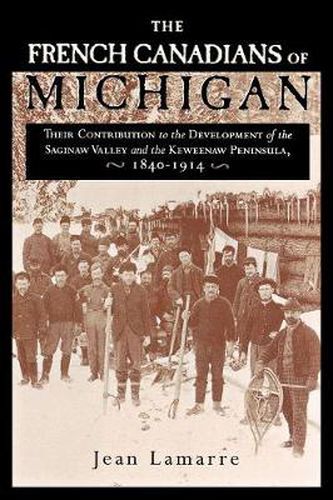Readings Newsletter
Become a Readings Member to make your shopping experience even easier.
Sign in or sign up for free!
You’re not far away from qualifying for FREE standard shipping within Australia
You’ve qualified for FREE standard shipping within Australia
The cart is loading…






This title is printed to order. This book may have been self-published. If so, we cannot guarantee the quality of the content. In the main most books will have gone through the editing process however some may not. We therefore suggest that you be aware of this before ordering this book. If in doubt check either the author or publisher’s details as we are unable to accept any returns unless they are faulty. Please contact us if you have any questions.
Most information regarding the French Canadians in Michigan concerns those who settled during the French period. However, another significant migration occurred during the industrial period of the nineteenth century, when many French Canadians settled in the Saginaw Valley and on the Keweenaw Peninsula - two regions characteristic of Michigan’s economic development in the nineteenth century. The lumber industry of the Saginaw Valley and the copper mines of the Keweenaw Peninsula provided very different challenges to French Canadian settlers as they tried to find ways to adapt to changing environments and industrial realities. The French Canadians of Michigan looks at the factors behind the French Canadian immigration by providing a statistical profile of the migratory movement as well as analysis of the strategies used by French Canadians to cope with and adapt to new environments. Using federal manuscript censuses, parochial archives, and government reports, Jean Larnarre closely examines who the immigrants were, the causes of their migration, their social and geographical itinerary, and the reasons they chose Michigan as their destination. Besides comparing the different settlements in the Saginaw Valley and the Keweenaw Peninsula, Lamarre also compares the Michigan French Canadians to the French Canadians who settled in New England during the same period. This book is a major contribution to the study of the French Canadian migration to the Midwest and will be valuable to researchers of both Michigan and French Canadian history.
$9.00 standard shipping within Australia
FREE standard shipping within Australia for orders over $100.00
Express & International shipping calculated at checkout
This title is printed to order. This book may have been self-published. If so, we cannot guarantee the quality of the content. In the main most books will have gone through the editing process however some may not. We therefore suggest that you be aware of this before ordering this book. If in doubt check either the author or publisher’s details as we are unable to accept any returns unless they are faulty. Please contact us if you have any questions.
Most information regarding the French Canadians in Michigan concerns those who settled during the French period. However, another significant migration occurred during the industrial period of the nineteenth century, when many French Canadians settled in the Saginaw Valley and on the Keweenaw Peninsula - two regions characteristic of Michigan’s economic development in the nineteenth century. The lumber industry of the Saginaw Valley and the copper mines of the Keweenaw Peninsula provided very different challenges to French Canadian settlers as they tried to find ways to adapt to changing environments and industrial realities. The French Canadians of Michigan looks at the factors behind the French Canadian immigration by providing a statistical profile of the migratory movement as well as analysis of the strategies used by French Canadians to cope with and adapt to new environments. Using federal manuscript censuses, parochial archives, and government reports, Jean Larnarre closely examines who the immigrants were, the causes of their migration, their social and geographical itinerary, and the reasons they chose Michigan as their destination. Besides comparing the different settlements in the Saginaw Valley and the Keweenaw Peninsula, Lamarre also compares the Michigan French Canadians to the French Canadians who settled in New England during the same period. This book is a major contribution to the study of the French Canadian migration to the Midwest and will be valuable to researchers of both Michigan and French Canadian history.